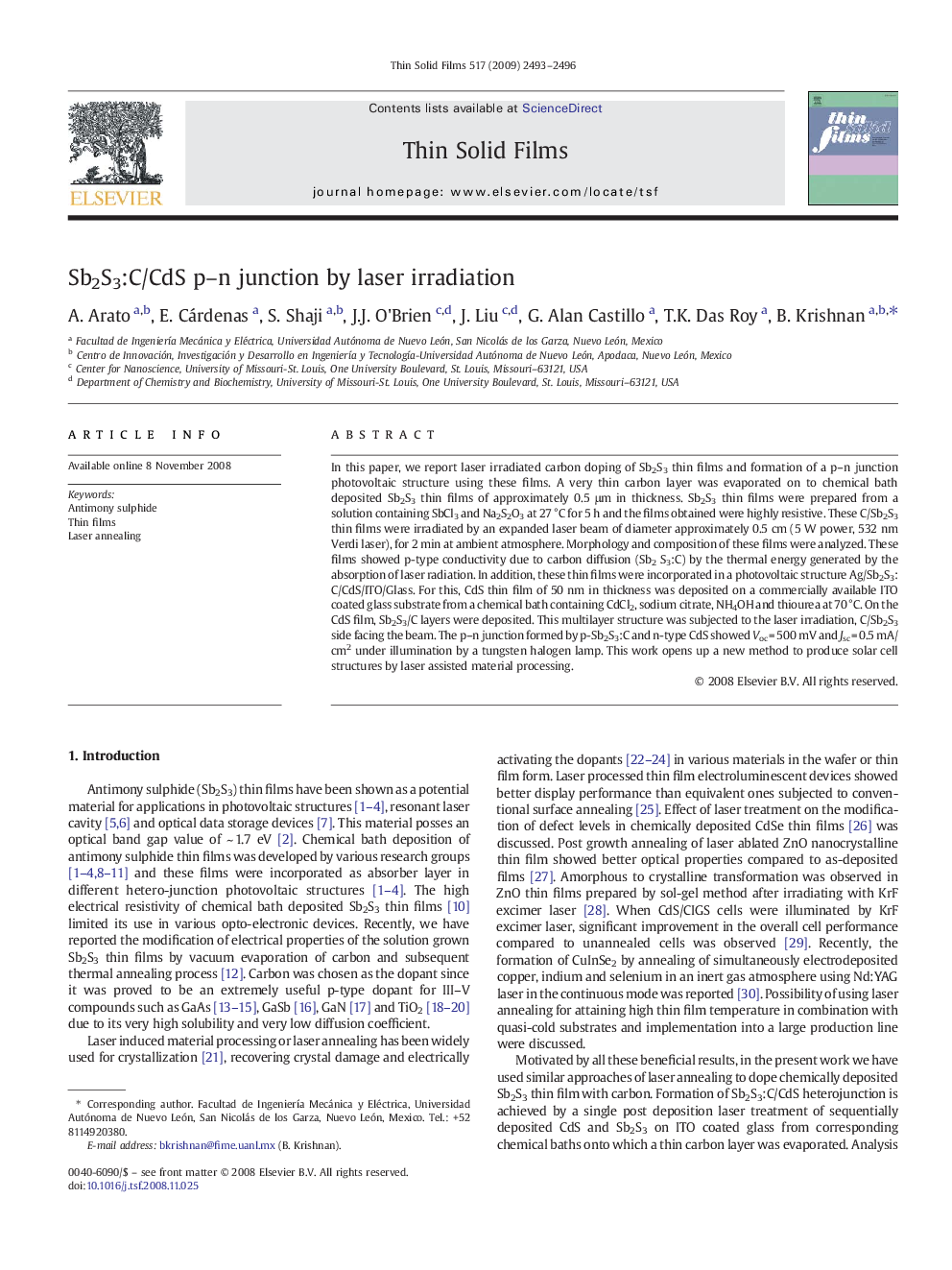| Article ID | Journal | Published Year | Pages | File Type |
|---|---|---|---|---|
| 1671227 | Thin Solid Films | 2009 | 4 Pages |
In this paper, we report laser irradiated carbon doping of Sb2S3 thin films and formation of a p–n junction photovoltaic structure using these films. A very thin carbon layer was evaporated on to chemical bath deposited Sb2S3 thin films of approximately 0.5 μm in thickness. Sb2S3 thin films were prepared from a solution containing SbCl3 and Na2S2O3 at 27 °C for 5 h and the films obtained were highly resistive. These C/Sb2S3 thin films were irradiated by an expanded laser beam of diameter approximately 0.5 cm (5 W power, 532 nm Verdi laser), for 2 min at ambient atmosphere. Morphology and composition of these films were analyzed. These films showed p-type conductivity due to carbon diffusion (Sb2 S3:C) by the thermal energy generated by the absorption of laser radiation. In addition, these thin films were incorporated in a photovoltaic structure Ag/Sb2S3:C/CdS/ITO/Glass. For this, CdS thin film of 50 nm in thickness was deposited on a commercially available ITO coated glass substrate from a chemical bath containing CdCl2, sodium citrate, NH4OH and thiourea at 70 °C. On the CdS film, Sb2S3/C layers were deposited. This multilayer structure was subjected to the laser irradiation, C/Sb2S3 side facing the beam. The p–n junction formed by p-Sb2S3:C and n-type CdS showed Voc = 500 mV and Jsc = 0.5 mA/cm2 under illumination by a tungsten halogen lamp. This work opens up a new method to produce solar cell structures by laser assisted material processing.
